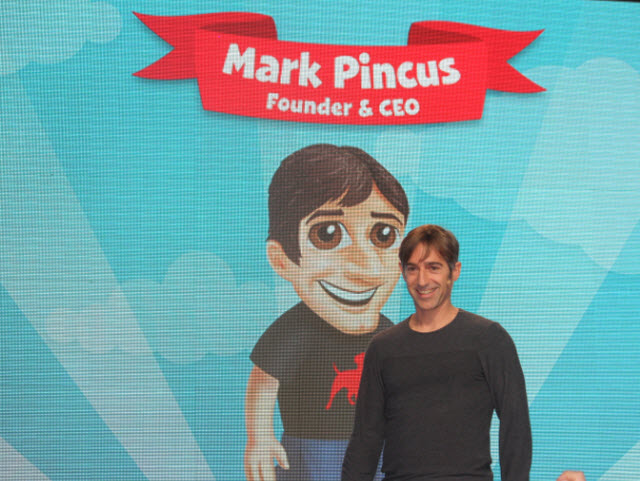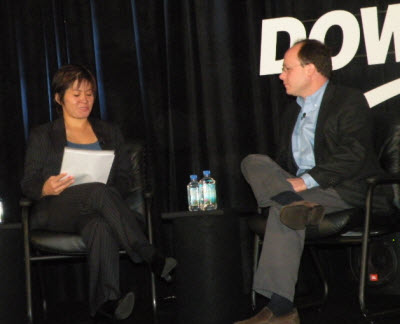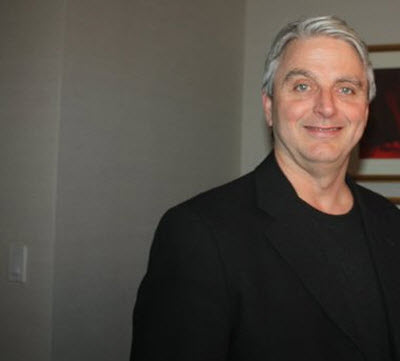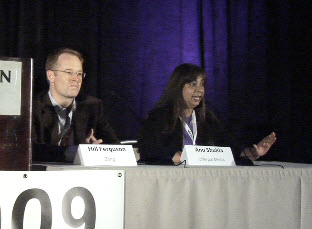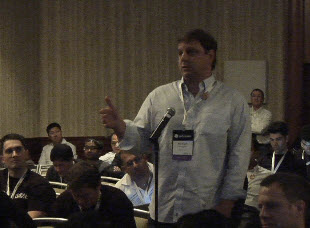The Big Three
Zynga was becoming a little more respectable. But inside Zynga, all that mattered was that you could do your job and move with speed. That was why Zynga was ready to pounce when the right game, like FarmVille, came along.
Inside Zynga, Pincus was trying to stay humble and nimble. In a talk, he said he didn’t like good press stories about his company because it reminded him of his “fear of failure mode.”
With the huge growth of FarmVille, it became obvious to a lot of investors that the social game market was on fire in 2009. Console games and ad-based casual web games had cooled off during the recession. The world took further notice when John Pleasants, the No. 2 executive at EA, resigned to take a job as the CEO of Playdom in June 2009. EA had 9,000 employes at the time, while Playdom had 65. It made everybody think social gaming was in its Gold Rush stage.
Pleasant’s departure was starting to look like a trend. Executives at the big companies wanted to cash in on the potential lucrative options at the hot social game companies. At about the same time that Pleasants left EA, Simon Jeffery quit as president of Sega of America to become an executive of iPhone game startup Ngmoco, which itself was founded by Neil Young, a former EA executive. There was a race going on, and no one wanted to be left behind.
The pattern was clear. No executive wants to say it. But rather than try to fix a big company that’s having trouble with the transition to digital, these executives were going straight into the digital market to create or join companies in the hot iPhone or social gaming markets. At the time, EA said that Pleasants was being replaced as COO by the returning John Schappert.
Zynga made the combination of free-to-play and asynchronous gaming — or turned-based gaming, where one player moved at a time — work well for players on social networks, who only had a few minutes a day to play. The turn-based gaming allowed players to make their moves offline, at their own convenience, and play socially with faraway friends. That was a formula that worked well for tens of millions of people, many of whom didn’t consider themselves to be gamers because they just didn’t have the time to play.
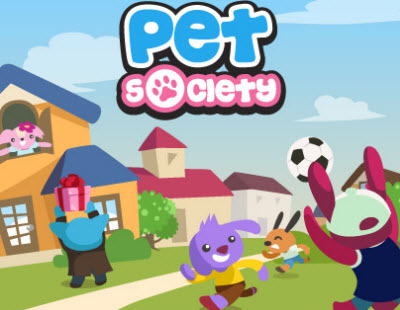 Inside Network predicted that the virtual goods market in the U.S. would hit $1 billion in revenue. Much of that was divided among the Big Three of social games: Zynga, Playdom and Playfish. Zynga was far ahead because of FarmVille, but the standings could change at any time if one of the game companies came up with a new hit.
Inside Network predicted that the virtual goods market in the U.S. would hit $1 billion in revenue. Much of that was divided among the Big Three of social games: Zynga, Playdom and Playfish. Zynga was far ahead because of FarmVille, but the standings could change at any time if one of the game companies came up with a new hit.
Anybody could make a Facebook game. But the tough thing became getting it noticed as thousands of apps materialized on the social network. The Facebook game leaders could easily cross-promote their new titles to their existing users. The console game publishers took notice. But without a hit game to start with, they had a tough time. Electronic Arts launched Spore Islands — based on a hit game franchise on the PC — in the fall of 2009, but the game bombed.
Desperate to participate in the new market, big gaming brands started circling the market. At EA, Schappert tried to cool the enthusiasm for the startups. In a talk in October 2009, Schappert said that the social gaming bubble was getting bigger and it resembled all of the hype that used to envelop the mobile phone games and virtual world markets a few years ago.
He noted that when EA agreed to buy Jamdat Mobile for $680 million in December, 2005, that was a peak moment for the mobile games bubble. Venture capitalists funded lots of mobile game startups in the hopes of getting a similar outcome, only to see the peak shift to virtual worlds such as Second Life.
“Social games have attracted a lot of eyeballs,” Schappert said. “Venture money is pouring into it. Is it sustainable or is it a bubble? There are a lot of parallels to mobile. For those who say that packaged goods games (sold in retail stores) are going away, they are a little ahead of themselves.”
Schappert didn’t deny that the social and mobile markets were exciting. But he said that in two years, the social game industry will mature and come back down to Earth. At that point, Schappert said that the hit games on social networks will likely be familiar brands, “not games that we’ve never heard of.”
In some ways, Schappert seemed like he was communicating a message to Mark Pincus. EA had made offers to buy Zynga over time. Zynga wanted $1 billion. Based on earnings at the time (Zynga would privately record a loss of $52.8 million on revenue of $121.5 million in 2009), it was an outrageous sum. Pincus was always willing to sell out, but only for a crazy price. Was that price justified? Pincus’s view was that virtual goods were going to become a huge market within five years, and Zynga had a chance to have about 30 percent of that market. On that basis, Zynga’s value could be viewed as much higher. In the meantime, if someone was willing to overpay for Zynga, Pincus was willing to sell.
That kind of attitude showed that Pincus wasn’t thinking just about the near term, but the grand possibilities of the future. He was like Mark Zuckerberg, who early on had an opportunity to sell Facebook for $1 billion. According to David Kirkpatrick’s book, The Facebook Effect, one-time Facebook executive, Owen Van Natta, brought a deal to Zuckerberg. He had an offer from Yahoo, which wanted to buy Facebook for a billion dollars. Zuckerberg turned him down. In fact, later on, Microsoft tried to buy Facebook for $15 billion, Kirkpatrick wrote, and Zuckerberg turned that down too. Pincus was close to Zuckerberg, as an angel investor in the social network, and thought like him.
Then, on Nov. 9 2009, EA dropped two bombshells. It was going to lay off 1,500 employees and close a bunch of game studios. The layoffs were part of an apocalypse for game developers. Wanda Meloni, an analyst at M2 Research, found that 60 game studios had laid off more than 8,450 employees from July to November in 2009.
And it was buying social game maker Playfish for at least $300 and as much as $400 million. Playfish was viewed as valuable because it consistently came up with original titles, like Who has the Biggest Brain? It had more than 60 million monthly active users and it didn’t do much advertising at all to get them. Still, instantly, Zynga was now viewed as being much more valuable than others thought it was because it was a lot bigger than Playfish.
EA had joined the social gaming party. Coming so soon after Schappert’s talk, it seemed like the earlier speech was really aimed at reducing the price EA would have to pay for an acquisition. Before the deal, Activision Blizzard was EA’s clear rival. Now, EA’s public enemy No. 1 was Zynga. It was as if John Riccitiello, the chief executive of EA, wanted to square off against his old colleague, Bing Gordon, in the hottest part of games.
Playdom copycat allegations
Since the stakes were so high, Zynga fought ferociously not only in the market, but in the courts too. In September 2009, just before it settled its lawsuit with Maestri over Mob Wars, Zynga filed a lawsuit against Playdom over trade-secret theft. Many in the industry viewed that lawsuit as ironic, given Zynga’s history with copying. But from Zynga’s viewpoint, copying was OK. But stealing documents, code, and game ideas was not.
The lawsuit showed that the competition had become a knife fight. Zynga alleged that four former employees — Raymond Holmes, David Rohrl, Martha Sapeta, and Scott Siegel — left Zynga and took various documents with them. They included “The Zynga Playbook,” which was the recipe book that contains Zynga’s “secret sauce” for competing in social games. If one employee had left, that wasn’t a big deal. But multiple employees made it appear to be a big deal.
In discovery, Zynga uncovered emails with Playdom executives that showed their loathing for Mark Pincus, according to an amended complaint filed back in May 2010. Playdom co-founder Daniel Yue said, “God I hate Pincus.” Zynga’s lawyers argued that these comments created a place where theft was seen as justifiable.
The court granted an injunction in Zynga’s favor in the lawsuit in March, and another one in August, saying that Playdom was not allowed to use the allegedly stolen trade secrets.
Zynga alleged that Rohrl, its former director of design, stole an entire game idea and its associated innovative game mechanics from Zynga and developed it under a different name for Playdom. Rohrl sent secret emails from his private Gmail account to Yue, who promised to keep them private. They were talking while Rohrl was still employed at Zynga in January 2009, and Rohrl didn’t get a job offer until March, 2009. Zynga alleged that Rohrl got a bonus from Playdom for his actions. In March, the court issued an injunction prohibiting Playdom from releasing the game.
Playdom later admitted that Zynga documents had been transferred to Playdom computers by former Zynga employee Chris Hinton (who was not a defendant) and these documents were used to compete against Zynga. But it seemed as if the Zynga Playbook really just said “copy others” and that Playdom was now doing to Zynga what it did to others.
Zynga also alleged that Playdom hacked Zynga’s computer network and gained access to Zynga’s confidential customer list and customer data, including data on the then-flagship game Zynga Texas Hold Em Poker. Zynga said Playdom used automated scripts to steal Zynga data on 1.6 million Zynga users, including how much virtual currency each customer had. The next day, on Jan. 28, 2009, Playdom allegedly sent solicitations to Zynga’s players to recruit them to Playdom’s own competing Poker Palace game. The lawsuit was settled in November, 2010, after Playdom was under new ownership.
ScamVille
That time in the fall of 2009 was momentous for social gaming for another reason. On Halloween, at the close of the Virtual Goods Summit, Michael Arrington, editor of of the tech blog TechCrunch, confronted Anu Shukla (pictured right) , chief executive of Offerpal, which specialized in creating Facebook ads known as offers, where a gamer got virtual goods if they signed up for a Netflix subscription or something like that. The resulting firestorm engulfed Zynga, other social game companies, and Facebook itself.
At the close of a panel where Shukla spoke, Arrington asked how Shukla could defend her business of making offers that were leading the social game industry “into hell.” He said that Shukla was either “unethical or you don’t know much about your business.”
Shukla responded with a long answer about why Arrington’s commentary was “shit, double shit and bullshit.” The whole answer was captured on video. The question was whether Shukla and other offer vendors realized that there were a number of scam offers where users didn’t realize they were signing up for monthly subscriptions or other “slimy” offers, Arrington said. Under the scam, users wouldn’t realize that if they clicked on an offer page, the small print would put them on the hook for paying for an expensive service for a year or more. They would only find out when their monthly bill arrived.
Offerpal said that it was handling transactions in the millions, and sometimes there were bad offers that had to be weeded out. But Shukla defended the practice of monetizing games and other social apps through offers, which let people pay with their time, participation and attention, rather than actual money. When players wanted to buy something in the games, such as a better plow to farm the land in Zynga’s FarmVille game, they have to pay. As an alternative to shelling out cash, they could accept an offer from Offerpal, which gets the user to do something like fill out a survey or send flowers to a loved one.
Arrington said the offers were ineffective, meaning that advertisers like Netflix weren’t getting their money’s worth from the ads — but Facebook and others involved weren’t putting a stop to the practice because they were all making money from stupid users.
Shukla contended that those objections are “shit” because most of the offers were high-quality and were filtered. She said that more than 160 million consumers had participated in Offerpal’s offers over the previous two years. She said the vast majority of offers are working out well, because the advertisers keep coming back.
Zynga’s own monetization team was already scrutinizing the offers. They were within a short time of putting a stop to the bad offers, but Arrington got there first.
Arrington (pictured right) followed up by running an article dubbed ScamVille, where he backed up his assertions with examples of scam offers in the “social gaming ecosystem of hell.” A few days later, Arrington wrote that a third of Zynga’s revenue came from lead generation and other offers. Zynga insiders said that wasn’t true. Amid a firestorm of controversy, Zynga started taking steps to remove deceptive offers. But Mark Pincus defended the practice of offering CPA offers.
Then TechCrunch dropped another bomb on Zynga, running a video where Pincus, in a talk to an audience in Berkeley, Calif., acknowledged that he “did every horrible thing in the book just to get revenues.” Under heat itself, Facebook decided to suspend all play of Zynga’s FishVille game because it found scam-like offers in that game. Six days passed before Facebook allowed Zynga to operate FishVille again. The resulting investigation forced Facebook to remake its policies on offers and narrow down its list of approved vendors. Offerpal was booted out, and Zynga stripped out all offers for a while until it could guarantee there were no more scams.
The incident created a crisis of confidence for Offerpal, Facebook, and Zynga. Shukla was removed as CEO of Offerpal, but the company eventually had to move into a different part of the business. ScamVille further hurt Zynga’s reputation in the game industry as a company that would sell out its users in order to get revenue. By cutting out the offers, Zynga had to reset its revenue and profit expectations. It would mean that ad revenue would be lower in 2010 than it was in 2009.
Regarding his speech about “every horrible thing” at Berkeley, Pincus said to Details magazine later, “I didn’t mean to be so crass. But I was talking in a bar.”
The Russians are coming
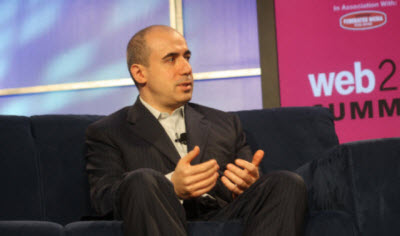 Zynga would still end 2009 with more than $121 million in revenues, as it later reported. Its net loss, which no outsiders knew at the time, was $53 million. But that didn’t matter as much as its user count, which was 207 million monthly active users, was more than double the 99 million from a year earlier. Zynga later revealed that its top three games accounted for 83 percent of its revenue in 2009. It closed the year with 576 employees.
Zynga would still end 2009 with more than $121 million in revenues, as it later reported. Its net loss, which no outsiders knew at the time, was $53 million. But that didn’t matter as much as its user count, which was 207 million monthly active users, was more than double the 99 million from a year earlier. Zynga later revealed that its top three games accounted for 83 percent of its revenue in 2009. It closed the year with 576 employees.
Despite the ScamVille crisis, Zynga was clearly one of the hottest new brands and Kleiner Perkins poured another $15.1 million into the company in an extension to its second round of funding. And on Dec. 15, 2009, DST, a Russian investment company led by Yuri Milner (pictured above), agreed to invest $180 million in Zynga.
In an interview with VentureBeat, Milner said, “We put a price on certain intangibles, like the quality of the team, the leadership position in the sector, and obviously the amazing growth of the business. From the time we started talking to the point where the deal was signed, the company grew up a few dozen percentage points on all fronts. That was quite a spectacular growth we have seen. All those things factor in the valuation.”
The deal allowed some employees to sell their shares, but enabled Zynga to stay private. It also gave Zynga a considerable war chest to fight off challenges like Electronic Arts.
Asked if the investment allowed Zynga to put off an initial public offering, Pincus dodged and said, “The approach we have taken with building the company and trying to be a participant in social gaming becoming an industry was to work really hard on the product front and the infrastructure and the growth. We did not want to let the media and buzz get ahead of itself. We did not want the company to get ahead of itself on the financing front.”
He added:
What we have done is along the way tried to partner with high-quality, smart investors who added to the DNA of the company and supported our long-term vision and shared it. All the investors have done it before in their own way. The leaders have nothing to prove. Whether it is Kleiner Perkins or Marc Andreessen or DST. There are groups that are ready to go for it and they want to see us go for it. That has been important to have that foundation. With regard to an IPO, it didn’t feel like that was going to accelerate our next four quarters of product and people growth. There are things about being public that can hamper a team’s ability to execute before they are ready for it. This route was a no brainer.
Why would Milner, one of the savviest investors of the new Web 2.0 era, give such a big pile of money to Pincus? Pincus’s vision was that in five years, the virtual goods industry would become huge. If it stayed the top gaming company on Facebook, Zynga would be in a position to have 30 percent or more of a very large market.
Already, Zynga was able to cross promote its new games to its existing game users. Others couldn’t compete on the same scale. Zynga also had collected a huge amount of data and experience on what worked with users. Other companies could copy the features of Zynga’s games, but, without Zynga’s data, they had to guess at what features really generated the most revenue. While Zynga’s losses were still big, its future looked bright.
